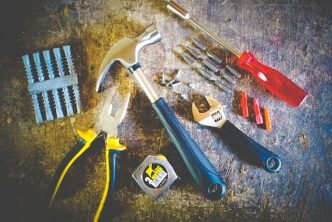Regarding car performance and handling, we often overlook the crucial role that tires and wheels play. Understanding the impact of tire pressure, tread depth, and even the choice between custom or stock wheels can significantly affect how our cars handle corners, accelerate, and brake.
In this article, we will explore the various ways how tires and wheels shape car performance and handling, helping you make informed decisions to enhance your driving experience.
Table of Contents
How Tires and Wheels Shape Car Performance and Handling
Wheel Diameter
The wheel diameter plays a significant role in shaping a car’s performance and handling characteristics. Choosing the right wheel diameter is crucial for achieving the desired driving experience.
Larger wheel diameters offer a more aggressive and sporty look, while smaller ones prioritize comfort and fuel efficiency.
However, it’s important to consider the impact on tire size, suspension, and overall balance. Larger wheels can improve cornering and grip but may sacrifice ride quality. However, smaller wheels provide a smoother ride but may compromise handling.
Understanding the relationship between wheel diameter, tire size, and vehicle dynamics is key to finding the perfect balance between style, performance, and comfort.
Tread Width
The width of the tire’s contact patch with the road directly impacts traction, cornering ability, and overall stability. Wider tread widths offer increased grip, especially during acceleration and cornering, providing enhanced performance in sports cars and performance-oriented vehicles.
Drivers should notice that wider tread widths can also increase rolling resistance, potentially affecting fuel efficiency. Meanwhile, narrower tread widths prioritize fuel efficiency and may offer a smoother and quieter ride.
Finding the right balance between tread width, vehicle weight distribution, and suspension characteristics is essential for optimal performance and handling.
Rigidity In Connection With Longevity
The importance of rigidity in connection with longevity cannot be overstated when considering how tires and wheels shape a car’s performance, handling, and overall durability.
A rigid tire and wheel connection ensures better control, responsiveness, and stability during acceleration, braking, and cornering. It helps maintain tire contact with the road surface, improving traction and handling.
Moreover, a rigid connection minimizes tire sidewall flexing, which can result in uneven wear and reduced tire lifespan. High-quality and properly sized tires and wheels will help you optimize the rigidity of the connection, resulting in improved performance and longer tire life.
The best way to help preserve the rigid relationship is annual maintenance, such as tire rotations and alignments, ensuring even wear and extending the longevity of both tires and wheels.

Tire Pressure And Fuel Efficiency
Underinflated tires increase rolling resistance, requiring more energy and fuel to propel the car forward. The biggest consequence that may happen is decreased fuel efficiency and potentially compromised handling.
On the other hand, overinflated tires reduce the contact patch with the road, resulting in reduced traction, harsher ride quality, and uneven tire wear.
“Remember that choosing tires with low rolling resistance, such as fuel-efficient or eco-friendly models, can improve fuel efficiency without sacrificing performance or safety.
The relationship between tire pressure and fuel efficiency highlights tires and wheels’ significant impact on a car’s overall performance, handling, and economical operation.” – according to Robert Herrera, a tire expert from COR Wheels
Tread Depth
Adequate tread depth is key for maintaining traction and grip, especially in wet or slippery conditions. As tires wear down over time, the tread depth decreases, reducing their ability to channel water and maintain contact with the road.
This can result in reduced traction, longer braking distances, and compromised handling. Different driving conditions and preferences may also require specific tread patterns and depths.
Whether you prioritize performance, fuel efficiency, or all-season capabilities, choosing tires with the appropriate tread depth ensures that your car delivers the desired performance, handling, and safety on the road.
Conclusion
Whether you desire enhanced grip and cornering performance or prioritize fuel economy and comfort, selecting the right tires and wheel width will significantly impact your car’s overall performance and handling characteristics.
After this article, We hope you understand how tires and wheels shape car performance and handling. Thank you for taking your time, and we hope to see you again.





